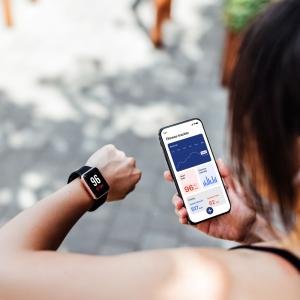
The state-of-the-art electrophysiology lab brings a high level of cardiology care to NYU Langone Hospital—Brooklyn and its community.
Photo: Rene Perez
Heart disease is the leading cause of death among adults in New York City, and across the United States close to 650,000 individuals die each year from heart disease, according to the U.S. Centers for Disease Control and Prevention.
These are sobering statistics—and a principal reason why NYU Langone Hospital—Brooklyn has built a state-of-the-art cardiac electrophysiology laboratory and appointed Robert J. Knotts, MD, as site director of the program. The electrophysiology lab increases access in Brooklyn to the latest advanced technologies and ablation techniques used to treat abnormal heart rhythms, known as arrhythmias, which can lead to life-threatening conditions if left untreated.
Dr. Knotts, who is board-certified in cardiovascular disease and adult echocardiography, specializes in three-dimensional electroanatomic mapping and ablation of complex arrhythmias. The addition of a new 580-square-foot electrophysiology lab at NYU Langone Hospital—Brooklyn provides a wide range of electrophysiology procedures. The facility includes the latest software and visual integration platform to provide high-definition real-time recording capabilities for increased clinical accuracy. The lab was specifically designed to help facilitate a clinical environment that prioritizes staff mobility and patient safety.
“The fields of cardiology and electrophysiology are constantly changing,” says Dr. Knotts. “Our ability to effectively identify and treat arrhythmias is greatly enhanced by cutting-edge technology. It’s really exciting to bring that to Brooklyn.”
“Our growing cardiology program continues to raise the bar for cardiac care in Brooklyn,” says George Fernaine, MD, MBA, chief of cardiology at NYU Langone Hospital—Brooklyn. “With the support of the Heart Rhythm Center, we have built one of the most comprehensive heart treatment programs in the borough.”
Physicians at NYU Langone Hospital—Brooklyn can perform minimally invasive cardiac procedures to treat heart rhythm disorders. Utilizing diagnostic and mapping catheters, doctors can create a comprehensive electrical map of a patient’s heart to pinpoint where an arrhythmia is located and target it for ablation. Pacemakers and defibrillators can be implanted to treat conduction system disorders, improve cardiac function, and protect patients at risk for dangerous arrhythmias. Additionally, the program has direct support from the renowned Heart Rhythm Center in Manhattan in the event a more complex procedure is required.
“Bringing enhanced catheterization care and electrophysiology studies to Brooklyn is an exciting moment,” says Larry A. Chinitz, MD, the Alvin Benjamin and Kenneth Coyle Sr. Family Professor of Medicine and Cardiac Electrophysiology and director of the Heart Rhythm Center. “We want our patients to be able to access the same quality of care anywhere across NYU Langone Health’s locations.”
Media Inquiries
Colin DeVries
Phone: 718-630-7414
colin.devries@nyulangone.org

